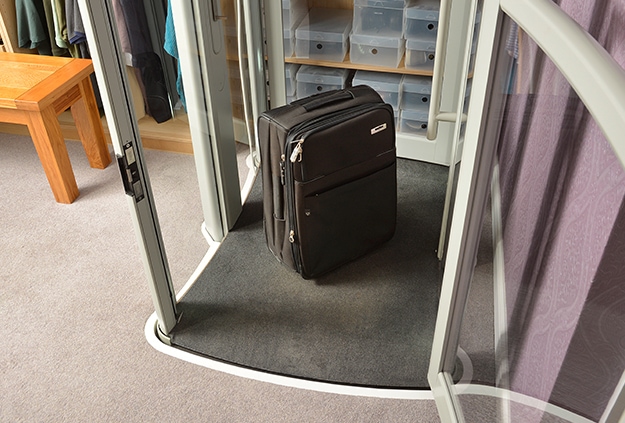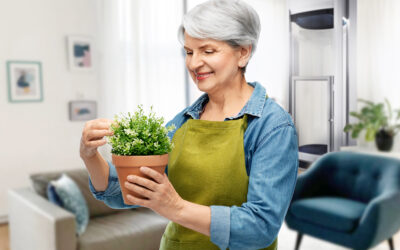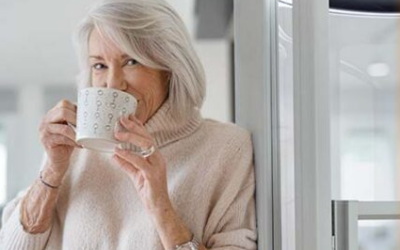Can home lifts be the key to positive mental health in an ageing society?
As our population ages, health and wellbeing issues develop. Compromised mobility is a common problem which can lead to chronic challenges such as loss of self-esteem, plus isolation and loneliness if living alone. Equally, other members of a shared household or extended family can become responsible for care and support which is often an unsustainable burden.
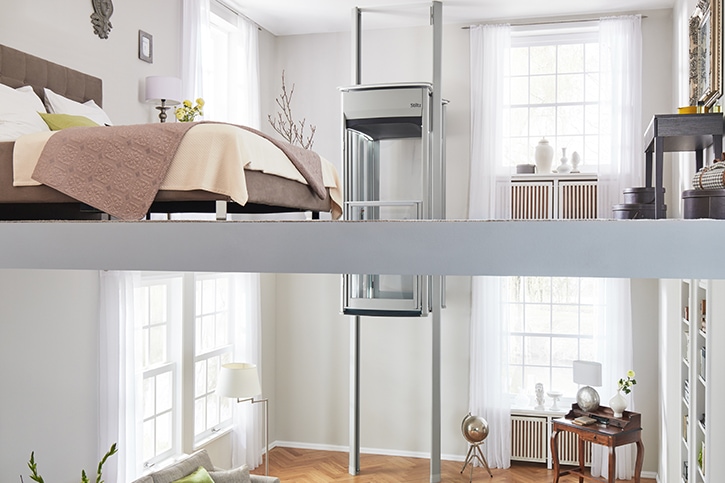
Accessing stairs is a typical challenge when strength, balance and coordination become affected leading to multiple issues around safety and peace of mind. Independence is lost with the need for carer support when accessing different floors which in turn can result in reduced levels of confidence and self-worth.
Add to this the current risk of Covid-19 infection from visitors or care home relocation, and the need to remain safely at home becomes more important than ever.
So how can installing home adaptation equipment help future-proof health and wellbeing?
As age increases, well-being decreases
Housing plays a key part in health and wellbeing. In a study published by the House of Commons in 2018, poor quality, un-adapted, hazardous, poorly heated and poorly insulated accommodation can lead to older people having reduced mobility, depression, chronic and acute illness, falls, social isolation, loneliness and depression. It also stated that appropriately adapted housing can keep older people healthy, support them to live independently and reduce the need for social care.
This is critical for society as the UK has an ageing population. According to the Office of National Statistics (ONS), by 2030, one in five people in the UK (21.8%) will be aged 65 or over, 6.8% will be aged 75+ and 3.2% will be aged 85+.
A home lift can enhance positive wellbeing
If the use of the stairs is becoming an issue due to limited mobility, a home adaptation may be essential to continue living safely in the home. A through-floor domestic lift for example will achieve accessible living and enable safe movement around the home independently without the risk of a trip or fall on the stairs. With the bedroom and bathroom both usually situated on the first floor, the use of a home lift will ensure a normal sleeping routine and appropriate hygiene. All too often when upstairs cannot be accessed the less mobile begin sleeping in a chair and washing without the use of a shower or bath. A loss of hygiene and dignity can ensue leading to a loss of self-esteem. Separation from partners increases the sensation of loss, particularly when couples are no longer able to share a bedroom.
With adaptations such as a home lift, this problem can be eradicated without costly structural changes, added care support or relocation to a different property. If suitable housing is not available and personal mobility continues to decline, the need to reside in a care home becomes the only alternative. It has been proven that both social and residential care has a link with depression, hence the longer people remain comfortable at home on their own terms, the better.
If a home lift is installed, freedom in a familiar setting can be retained without the stress of moving to a suitable ground floor flat, accessible apartment or bungalow. Finding a suitable accessible property is also a problem especially as bungalows are in short supply. Age UK details a study carried out by the House of Commons in 2018, only 2,579 new bungalows were built in 2017/18, whereas in 1986/87 this number was 28,831.
Home lifts require minimal space
The latest contemporary home lifts, such as a Duo+ or Trio+ manufactured by Stiltz, have a compact footprint requiring minimal space and their self-supporting rails provide the added benefit of flexible positioning. Installation is straightforward and disruption minimal, further reducing anxiety and stress. Controls are simple and intuitive to use, and styling is modern and attractive. Buyers of assisted living equipment are no longer willing to accept bland, poorly-designed equipment into their homes.
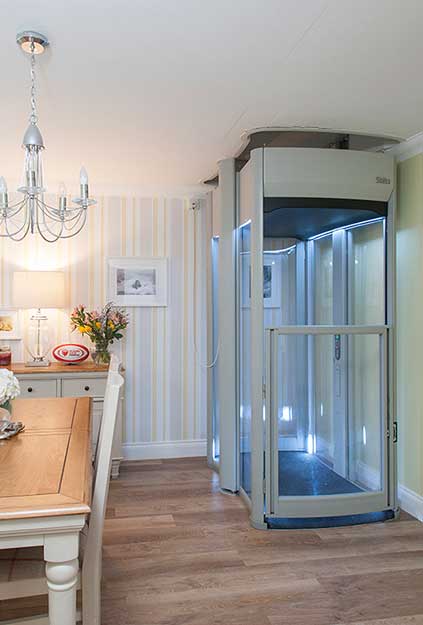
They are of the generation where attractive product design and materials mattered, and continue to matter as they age. Ideally, individuals living with disability do not want a home compromised by unattractive equipment that appears medical and cumbersome. A normal domestic environment is always the preference whilst facilitating successful and safe living – all fundamental to happiness and wellbeing.
Safe access leads to confidence
The installation of a home lift can also have a positive impact on confidence. Without the risk of a slip, trip or fall on the stairs, users worry less about possible injury and focus on more positive aspects of life. Being able to move around their home in a dignified way e.g., not having to use the stairs by sitting on each step, increases the feeling of control and reduces embarrassment. Convenience is also improved with faster access between floors, i.e., being able to answer the doorbell in a timely fashion if upstairs.
Manual handling
Home lifts can also have a positive impact on the wellbeing of family members and carers. These supporting stakeholders may previously have worried about the individual in their care falling on the stairs. Carers typically experience the strain of manual handling through assisted transfers to and from a stairlift or even physically carrying someone between floors. This is true when caring for both adults and children which can lead to carer falls and musculoskeletal injuries. If a carer’s mobility is compromised then their ability to support is undermined, in turn leading to more problems and pressure. Unlike many mobility products, home lifts provide no transfer barriers to access, enhanced by ergonomic controls and optional seating.
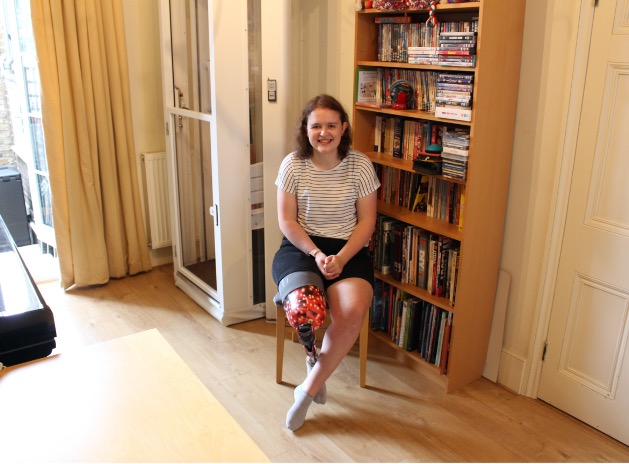
Stiltz Customer – Helena Stone
End users who benefit from great confidence with a home lift can be of all ages – not just the elderly. Stiltz Home lifts customer Helena Stone, 22, had an elective leg amputation after contracting CPRS following a kayaking accident.
Helena and her family had to adapt to their new circumstances in the family home. “After my amputation, the Stiltz Home lift we installed to help with my reduced mobility as a result of CPRS, was crucial. From the day I came home from the hospital, I was able to get around the house. If we didn’t have our home lift, I would have had to live downstairs which would mean I would be separated from my family. With our home lift, I could hop straight back onto my place on the sofa! It takes away the element of stress, especially for my parents who were always worried about me being in the house alone in case I had a fall. Now I can get from A to B without people worrying about me.
When lack of home adaptation impacts the NHS
Without appropriate assistive equipment in the home, safety can be compromised for people with restricted mobility. Public Health England (2018) stated that falls are the largest cause of emergency hospital admissions for older people and falling can cause injury, distress, pain, loss of confidence or independence and even mortality. In 2017/18 there were around 218,000 emergency hospital admissions related to falls among patients aged 65+, with around 149,000 (68%) of these patients aged 80+. Unaddressed fall hazards in the home are estimated to cost the NHS in England £435 million annually. These stark figures can be potentially alleviated with the right home adaptations such as a home lift.
Another consideration when reviewing home adaptations such as accessible baths, adjustable beds or home lifts, is the simplicity of use. Equipment must be intuitive to use and allow those with reduced dexterity to operate without strain or confusion. This factor is important when assessing the increase in dementia across the UK. It is currently estimated that dementia costs the UK society £26 billion per year averaging £32,250 per person. This cost is set to rise as the population demographic changes according to the Alzheimer’s Society, 2019 indicating an increased need for supportive equipment at home.
In the case of a home lift, the earlier this type of solution is introduced, the more time users have for familiarisation before cognitive impairment becomes pronounced. This can result in independence for longer and a reduced need for intervention when moving around their home.
Social prescription champions accessibility
Home adaptations have a part to play in the increased practice of social prescription. Also referred to as personalised care or community referral, social prescription is designed to help elderly or disabled people access a range of local, non-clinical services. It is also there to enable an individual to take greater control of their health and wellbeing in a holistic way, whether those needs are social, emotional, or practical.
A GP or healthcare professional can refer a patient to a Link Worker who will provide advice based on each person’s specific needs. This is referred to as ‘co-producing a social prescription’. Services include practical advice on home adaptations, healthy living and lifestyle advice. A Link Worker can also refer individuals to an Occupational Therapist for advice on home adaptions such as a home lift via a local authority or The Royal College of Occupational Therapists.
According to Health Education England (HEE), social prescribing can lead to a range of positive health and wellbeing outcomes, such as improved quality of life and emotional wellbeing. By 2023, all GPs in England will be able to refer patients to community activities and voluntary services – with the aim of reducing pressures on the NHS and social care.
Conclusion
It is clear to see the link between safe access in the home and better wellbeing. With the UK facing unprecedented challenges due to an ageing population and compromised health, the need for independence in the home has never been more vital. Add to this the new risk of Covid-19 which may remain for many years to come, possibly indefinitely, the ability to thrive without carer contact is a significant consideration for many, especially with underlying health conditions.
The answer to a future with a healthy and positive society is early home adaptation.
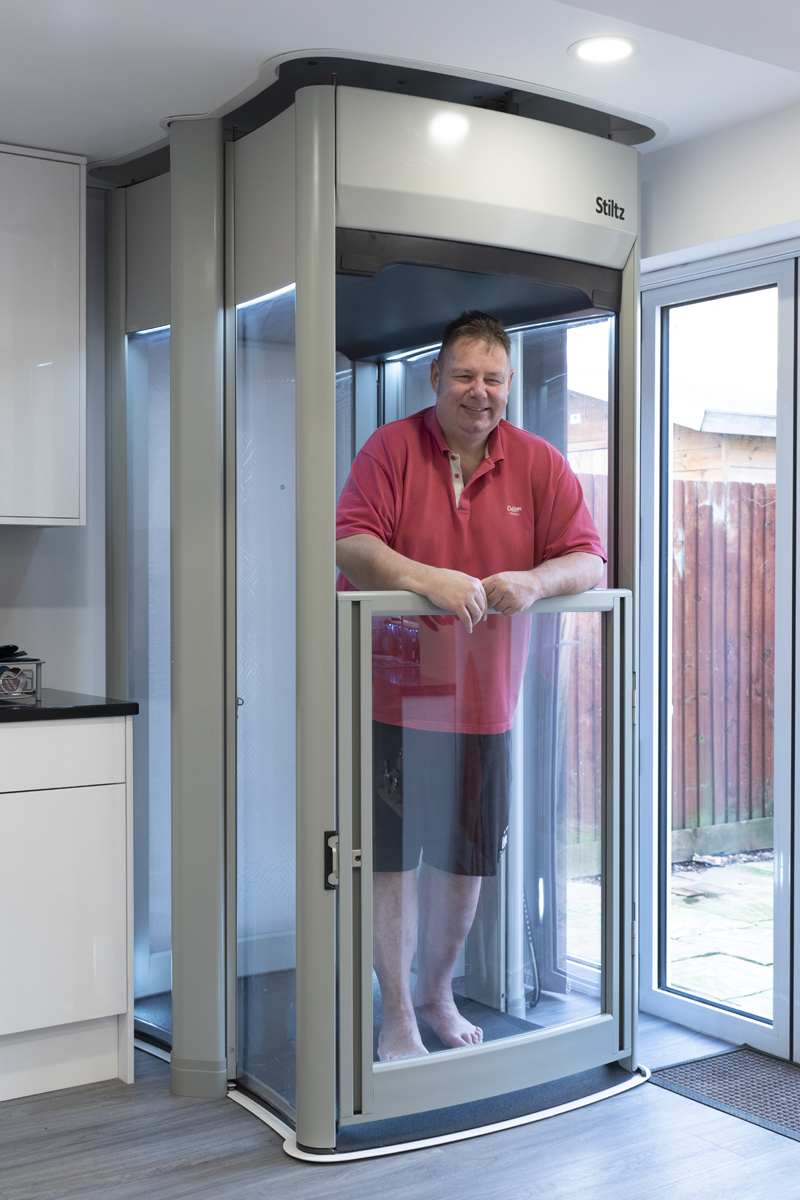
Accessing stairs is a typical challenge when strength, balance and coordination become affected leading to multiple issues around safety and peace of mind. Independence is lost with the need for carer support when accessing different floors which in turn can result in reduced levels of confidence and self-worth.
